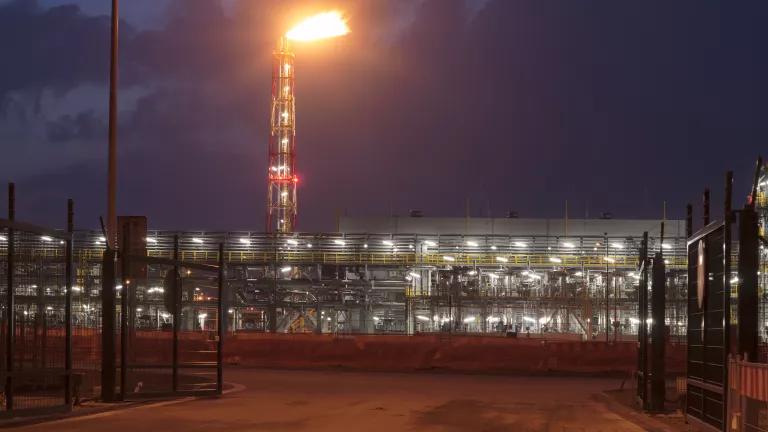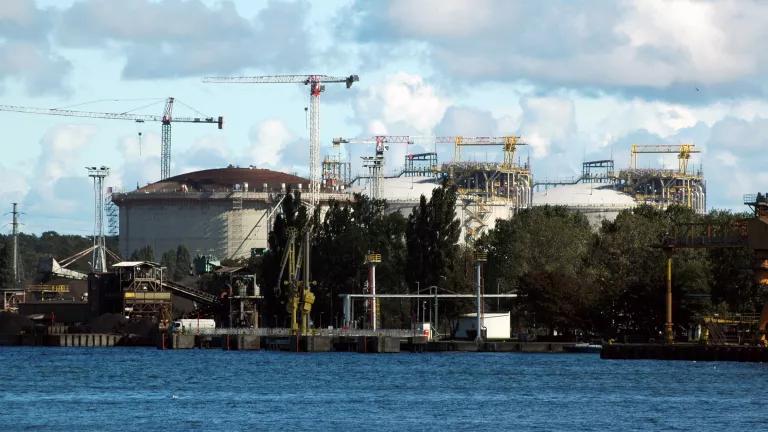NRDC Energy Report: Slow & Steady Won’t Win the Climate Race
NRDC’s Eighth Annual Energy Report digs into U.S. energy trends over the last two years to understand how our energy system has changed since our last report, where we may be headed, and what it all means for the worsening climate crisis.
Climate-related emergencies over the last two years have made it clear: the time for ambitious climate action in the United States and abroad is now. Deadly heat waves blanketing Europe during 2019 killed nearly 1,500 people in France alone, massive wildfires raged from Australia to the Amazon to the western U.S. in 2019 and 2020, and this year’s Atlantic hurricane season has been the busiest on record. NRDC’s Eighth Annual Energy Report, released today, digs into U.S. energy trends over the last two years to understand how our energy system has changed since our last report, where we may be headed, and what it all means for the worsening climate crisis.
This year’s report details both the good and bad news on energy and climate in the United States in an interactive and explanatory webpage. It focuses largely on 2019 because final energy data is not released until 10 months after the previous year’s conclusion. Our report also includes early signs from 2020. You can scroll through the maps, videos, graphics and text to learn more about the trends on air pollution, renewable energy, energy efficiency, transportation, oil & gas, and coal in the United States.
In a highlight of 2019, the U.S. electric sector officially surpassed the 2030 emission reduction targets from President Obama’s Clean Power Plan 11 years early, with carbon pollution falling by 8 percent between 2018 and 2019. This was despite the Trump administration repealing and replacing the rule. State laws, utility commitments, and corporate clean energy goals made since the start of 2019 are poised to further accelerate the nationwide growth of renewable energy. Almost 83 million U.S. homes and businesses are served by utilities and states with requirements or goals to transition to 100 percent clean power, representing about half of all electricity demand in the country.
However, these steps toward a cleaner future are not enough. The reductions achieved, and the pace at which we have achieved them, are well below the level necessary to keep the increase in global warming below 1.5 degrees Celsius. According to the Intergovernmental Panel on Climate Change (IPCC), global carbon dioxide (CO2) emissions must drop to 50 percent below 2010 levels by the end of this decade in order to keep warming below 1.5-degrees by the end of this century. Over the next 10 years, the United States will have to quintuple the amount of emission cuts made in the last decade to achieve this target.
The Trump administration’s federal regulatory and environmental rollbacks over the last four years have greatly hindered America’s ability to decarbonize its energy systems. And while states, cities, and businesses have stepped up and made ambitious commitments to support and invest in renewable energy technologies, it is still unclear how some of them will be achieved. Even if they can be, far more will be needed to meet the IPCC target.
The 2019 energy trends highlighted in our report show both the progress that we've made and the challenges we face in transitioning for a carbon-free economy. The coronavirus pandemic has accentuated the challenges, as the way we use and produce energy shifted dramatically in the first months of 2020 due to stay-at-home orders. COVID-19 has exacerbated deep racial and economic inequalities in the United States, with many of the communities most impacted by COVID the same ones that have long borne the greatest environmental and health burdens from air pollution. Fighting COVID-19 and restoring jobs, while ensuring that climate policy accounts for and addresses these existing inequities, will be crucial to building out a strong clean energy economy.
The United States is at a critical moment and the incoming Biden administration has a unique opportunity to jumpstart a clean energy transition. We must move full speed ahead toward a system that prioritizes a clean economy as well as an equitable one by centering health, community wellbeing, and climate action.





